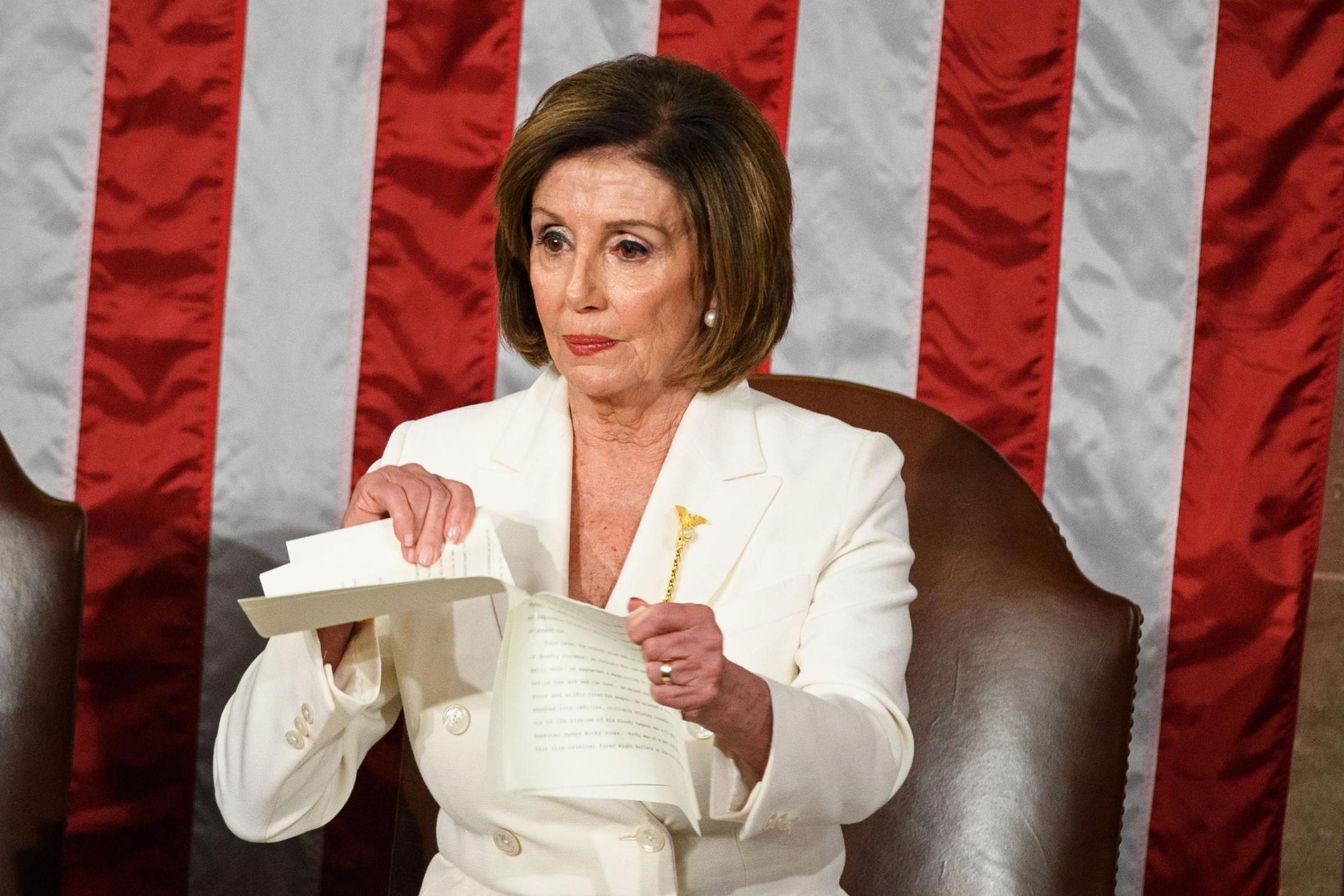Nancy Pelosi’s office hits out at Twitter and Facebook over edited video of her tearing up Trump’s speech
It does not violate policies, platforms say

Your support helps us to tell the story
From reproductive rights to climate change to Big Tech, The Independent is on the ground when the story is developing. Whether it's investigating the financials of Elon Musk's pro-Trump PAC or producing our latest documentary, 'The A Word', which shines a light on the American women fighting for reproductive rights, we know how important it is to parse out the facts from the messaging.
At such a critical moment in US history, we need reporters on the ground. Your donation allows us to keep sending journalists to speak to both sides of the story.
The Independent is trusted by Americans across the entire political spectrum. And unlike many other quality news outlets, we choose not to lock Americans out of our reporting and analysis with paywalls. We believe quality journalism should be available to everyone, paid for by those who can afford it.
Your support makes all the difference.Nancy Pelosi’s office has criticised Twitter and Facebook for not removing a “misleading” video of her ripping up Donald Trump’s speech that was tweeted out by the US president.
The social media platforms said they would not take down the edited video, which showed Ms Pelosi repeatedly tearing up Mr Trump’s State of the Union speech as he honoured audience members and showed a military family reuniting.
The House speaker did rip the pages of her copy of the speech but only after it was finished — not throughout the address as the video depicts.
Ms Pelosi’s office asked Twitter and Facebook to remove the video, which both sites have declined to do.
The social media sites have been emphasising their efforts to cut down on disinformation on their sites leading up to the election, hoping to avoid some of the backlash generated by rampant misinformation on social media during the 2016 election.
However, both Twitter and Facebook said the video of Ms Pelosi does not violate existing policies.
Facebook has rules that prohibit deepfake videos, which the company says are both misleading and use artificial intelligence technology to make it seem like someone authentically “said words that they did not actually say”.
Researchers say the video of Ms Pelosi is an example of a “cheapfake” video, one that has been altered but not with sophisticated AI like that used in a deepfake.
Cheapfakes are much easier to create and are more prevalent than deepfakes, which have yet to really take off, said Samuel Woolley, director of propaganda research at the Centre for Media Engagement at University of Texas.
“The latest fake video of Speaker Pelosi is deliberately designed to mislead and lie to the American people,” Drew Hammill, the speaker’s deputy chief of staff, tweeted on Friday.
He condemned Facebook and Twitter for allowing the video to stay up on the social media sites.
Facebook spokesman Andy Stone replied to Mr Hammill on Twitter and sad: “Sorry, are you suggesting the president didn’t make those remarks and the speaker didn’t rip the speech?”
In an interview Sunday, Mr Stone confirmed that the video did not violate the company’s policy.
In order to be taken down, the video would have had to use more advanced technology and possibly try to show Ms Pelosi saying words she did not say.
Twitter did not remove the video either, and pointed towards a blog post from early February that says the company plans to start labelling tweets that contain “synthetic and manipulated media”.
This measure will start next month.
The Pelosi team has pushed back against doctored online content in the past.
A video released last year was slowed down to make it seem the speaker was slurring her words and then shared widely across Twitter, YouTube and Facebook.
Associated Press
Join our commenting forum
Join thought-provoking conversations, follow other Independent readers and see their replies
Comments